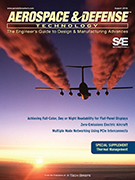Technical Paper
Current Trends Driving the Aerospace and Automotive Systems Architectures
2011-10-04
2011-36-0387
Based on that, we summarize their impacts on: 1) the aerospace and automotive system needs and their system requirements; 2) the system development and certification standards (SAE-ARP 4761, SAE-ARP 4754, RTCA DO-297, RTCA DO-254, RTCA DO-178B/C, RTCA DO-160, etc.); 3) the management levels of an organization (executive management, portfolio management and program management); and 4) the applicable guidelines (CMMI®, OPM3®, BSC®) to organize and conduct them successfully.



